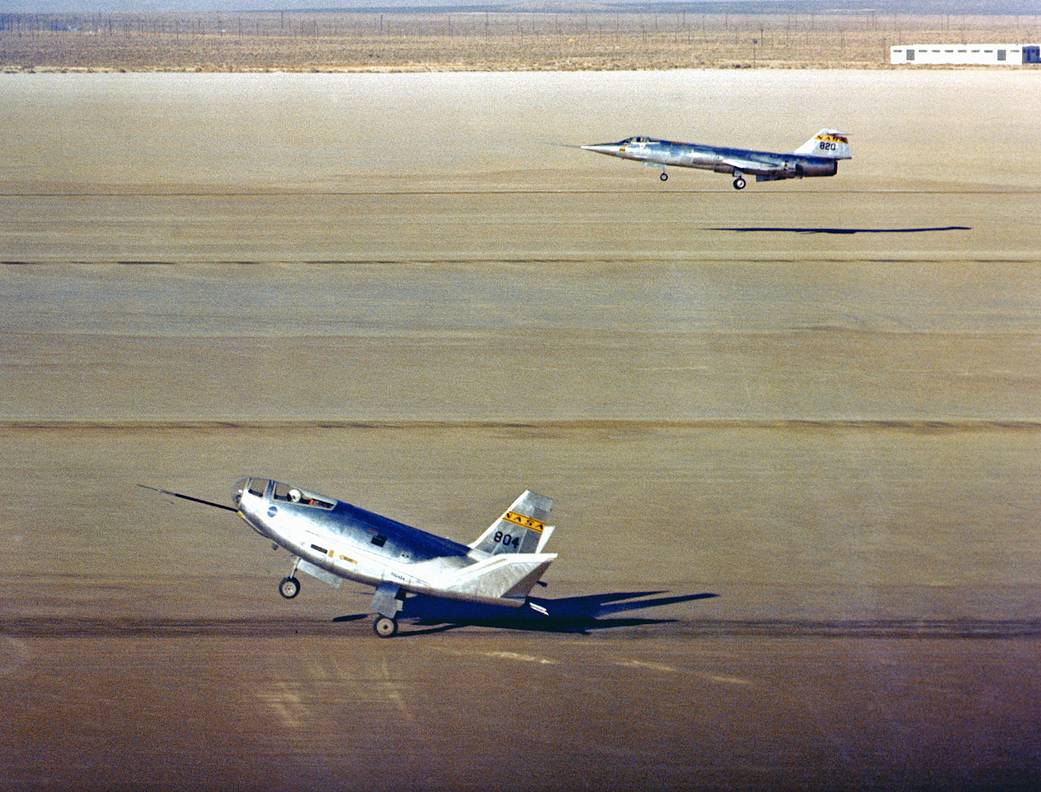ECN-2367
The HL-10 Lifting Body touches down on its main landing gear, while the pilot was holding the nose up to slow the vehicle. The F-104 in the background was used as a chase plane. Its pilot would give the HL-10’s pilot calls on his altitude above the lakebed as well as warnings about any problems. The NASA F-104s were also used for lifting-body training. With the landing gear extended and flaps lowered, the F-104 could simulate the steep, high-speed descent and landing of a lifting body.
The HL-10 was one of five heavyweight lifting-body designs flown at NASA’s Flight Research Center (FRC-later Dryden Flight Research Center), Edwards, Calif., from July 1966 to November 1975 to study and validate the concept of safely maneuvering and landing a low lift-over-drag vehicle designed for reentry from space.
Northrop Corporation built the HL-10 and M2-F2, the first two of the fleet of “heavy” lifting bodies flown by the NASA Flight Research Center. The contract for construction of the HL-10 and the M2-F2 was $1.8 million. “HL” stands for horizontal landing, and “10” refers to the tenth design studied by engineers at NASA’s Langley Research Center, Hampton, Va.
After delivery to NASA in January 1966, the HL-10 made its first flight on Dec. 22, 1966, with research pilot Bruce Peterson in the cockpit. Although an XLR-11 rocket engine was installed in the vehicle, the first 11 drop flights from the B-52 launch aircraft were powerless glide flights to assess handling qualities, stability, and control. In the end, the HL-10 was judged to be the best handling of the three original heavy-weight lifting bodies (M2-F2/F3, HL-10, and X-24A).
The HL-10 was flown 37 times during the lifting body research program and logged the highest altitude and fastest speed in the Lifting Body program. On Feb. 18, 1970, Air Force test pilot Peter Hoag piloted the HL-10 to Mach 1.86 (1,228 mph). Nine days later, NASA pilot Bill Dana flew the vehicle to 90,030 feet, which became the highest altitude reached in the program.
Some new and different lessons were learned through the successful flight testing of the HL-10. These lessons, when combined with information from its sister ship, the M2-F2/F3, provided an excellent starting point for designers of future entry vehicles, including the Space Shuttle.September 15, 1966
NASA Photo
2 min read


























